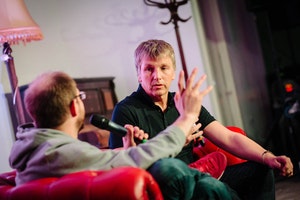Greg Wilson and the Birth of Mixing in the UK
On the 30th anniversary of the first live television demonstration of mixing in the UK, Greg Wilson looks back at his time spinning at legendary nightclubs Wigan Pier and Legend
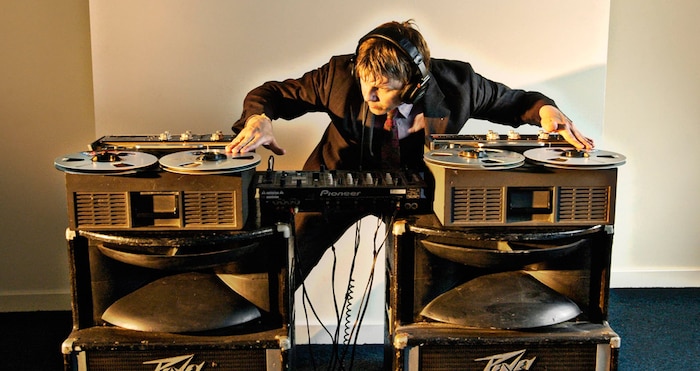
Why were English DJs popular in Europe? It was because of using the microphone. The English language was seen as the language for DJing. What was funny was that the record announcements would be in English, but if there was an announcement that someone’s taxi had arrived then that would be in Swedish or whatever. Mixing culture was just starting to have an influence in 1978 but the microphone culture was predominant. When we first heard about mixing, we didn’t have the equipment to do it, we didn’t have turntables that could vary in speed in order to mix together. We couldn’t really get records to run into each other except for maybe a bar. So it didn’t really take off. Initially, a lot of DJs tried it and it was flavour of the month, but then people just went back to the microphone. It was seen as an American thing that would never cross over.
We would play like three records in a row, most DJs would do like a Motown spot but there wasn’t mixing as such. I remember the first two records I ran on top of each other were both the Jackson Five’s “ABC” and “I Want You Back.” At the start of “ABC” there was a section that was similar to the middle of “I Want You Back” so I would run them together but I never saw it as mixing. Later down the line, I would do things like switch between Thelma Houston’s version and Harold Melvin & The Blue Notes’ version of “Don’t Leave Me This Way.” Probably, if I went back in a time machine, it would sound awful.
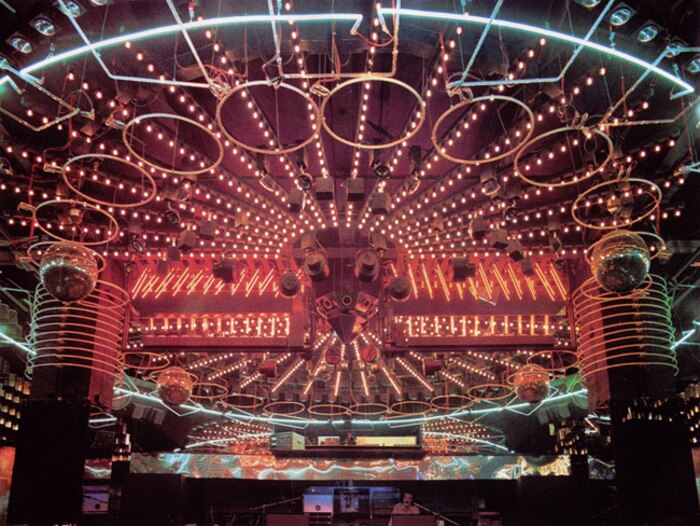
It wasn’t until I was at Wigan Pier and Legend and I had the right equipment to work with that it all started to make sense from a personal level. Wigan Pier was absolutely phenomenal for its time. It was the first club in the UK to have a laser system. The DJ box was in this 15 foot fibre glass frog, it had a light controller in the mouth of the frog, the DJ worked at the side, there was a monitor system inside. All of this we’d never seen the like of in the UK. The DJs equipment was usually an afterthought. The look of the bar was more important than the soundsystem. This club was designed around the DJ and it advertised itself as an American-style disco.
I thought it was a wonderful club and the same company was just about to open a new club called Legend and Nicky, my friend, was going to be DJing there, so there would be a job opening at Wigan Pier. The owner said: “Why don’t you audition?” Everyone wanted the job at this place. I said: “I have to go to Germany.” I [had a job there and] didn’t want to take the risk of not returning just because of an audition in the UK, but I asked him if I could send him a tape. I sent it to him and they got in touch with me in Germany and offered me the job. I was blown away, I actually wept I remember, I couldn’t believe it. This club was a dream club and now I was the four nights a week resident.
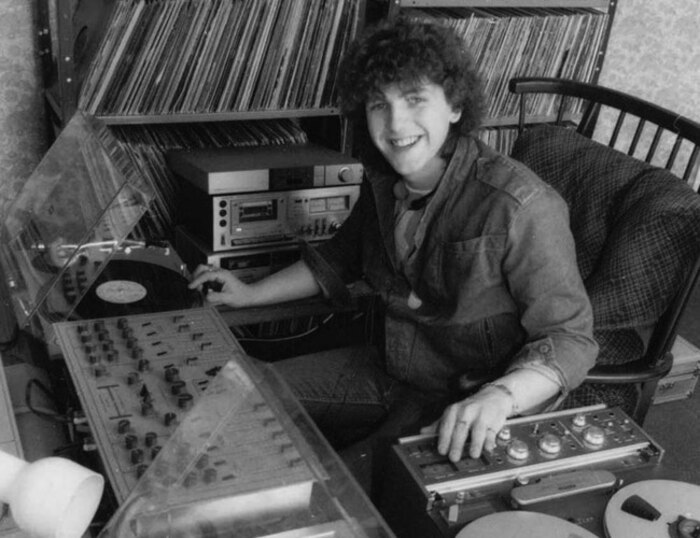
One of the nights was the specialist black music night based around the jazz/funk scene at the time. The other three nights were more a mixture of the more famous jazz/funk tracks, the futuristic stuff like Human League and Spandau Ballet, the New Romantics, and at the weekend we played more commercial black music like Shalamar and Michael Jackson. On the jazz/funk night we would play tracks like Donald Byrd’s “Falling Like Dominoes.”
I was a great believer in sharing the information about the records I was playing.
They heard of me at Legend because of the success of the Tuesday night at Wigan Pier. Legend had its own jazz/funk night on a Wednesday, which had been going okay. But then the DJ they had there left to run a rival night and it basically wiped it out there. The first night I played there were only about 70 people. (The club was designed for about 500.) It was looking a bit threadbare. One big difference from Wigan Pier, though, was that out of those 70 people probably 69 of them were black. It was an audience that weren’t really into a DJ on the microphone making announcements. They weren’t into the verbals of it. It was very much music-based. This was when I put the emphasis on the mixing.
One of the main things about the scene were the “all-dayers,” which happened on a Sunday or a bank holiday Monday. You would have all these people coming in from different areas. The “all-dayers” would run from 2 o’clock in the afternoon to midnight. You knew that you were making it as a DJ when you began to get booked for those. When I had been DJing for about six months at Wigan Pier, some of the promoters started to book me. Originally, I was way down the bill and gradually I came up the bill. When I was at Legend I would use the mic to tell people about events like that. If there was an “all-dayer” at Birmingham, if there was a coach taking people down there, when and where it was leaving, stuff like that.
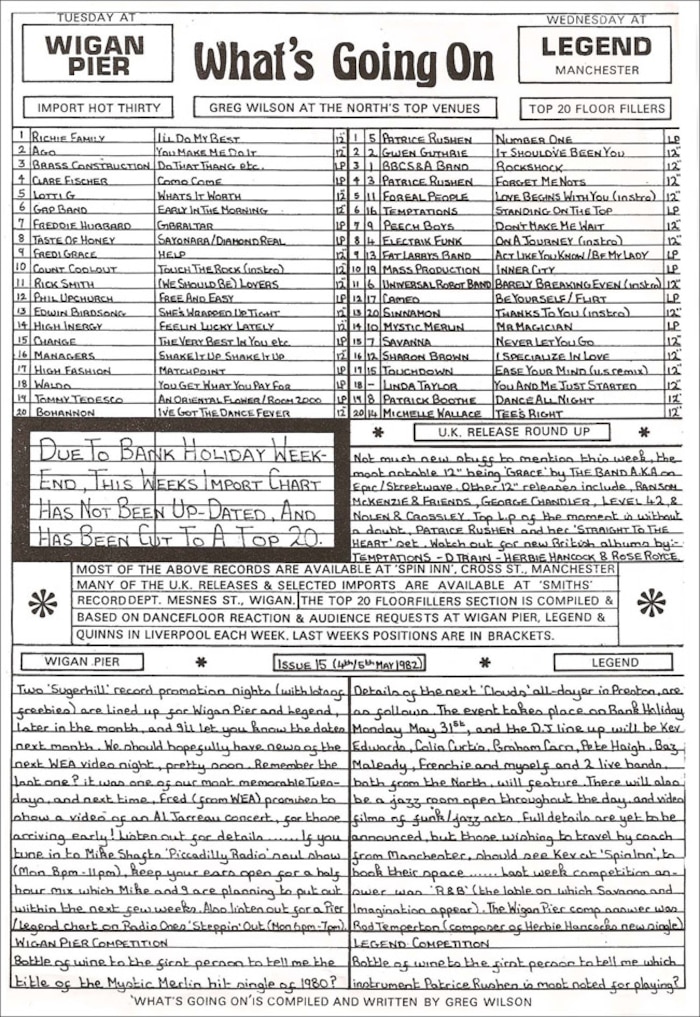
Even though I didn’t announce records any more at Legend I was still a great believer in sharing the information about the records I was playing. I thought it was important to keep the scene moving on, to keep it pushing forward. When I decided that the mixing was going to take centre stage I was worried that without announcements people would never find out what I was playing so I made an information sheet every week called “What’s Going On.” It had a floorfillers chart. It had a new releases chart. It had an information section saying what “all-dayers” were happening. It was handwritten! I had a template for it and just wrote it out each week and had it photocopied. So when people would come up to me and ask me what I was playing I would give them the sheet and they would go straight to their record shops and buy the record.
Some DJs like to keep it all exclusive but I can’t really see the point.
Later down the line I was asked to design a DJ booth and I included a special function. I always thought this would happen in clubs and it never happened – you know one of those LED read-out screens where information goes along, that was part of my booth design. I thought you would type in what you were playing and people would be able to see what you played but it never happened. I thought it was important that this information was shared.
Some DJs like to keep it all exclusive but I can’t really see the point. The music doesn’t belong to you – you are a channel. The Northern soul scene was very much about secrecy and gaining an advantage over other DJs by finding a rare record, covering up the label and calling it something else, giving it a completely different title and artist from what it really was. And other DJs were getting caught out because they were putting these records in their charts – and they didn’t even exist. That happened quite a lot. It wasn’t like that in our scene. It was a real love of moving the music forward and sharing it. We wanted more people to get into it.
This feature was excerpted from an RBMA lecture with Greg Wilson. Greg also talks at greater length about the moment when “the talking stopped” on his excellent website www.electrofunkroots.co.uk.
